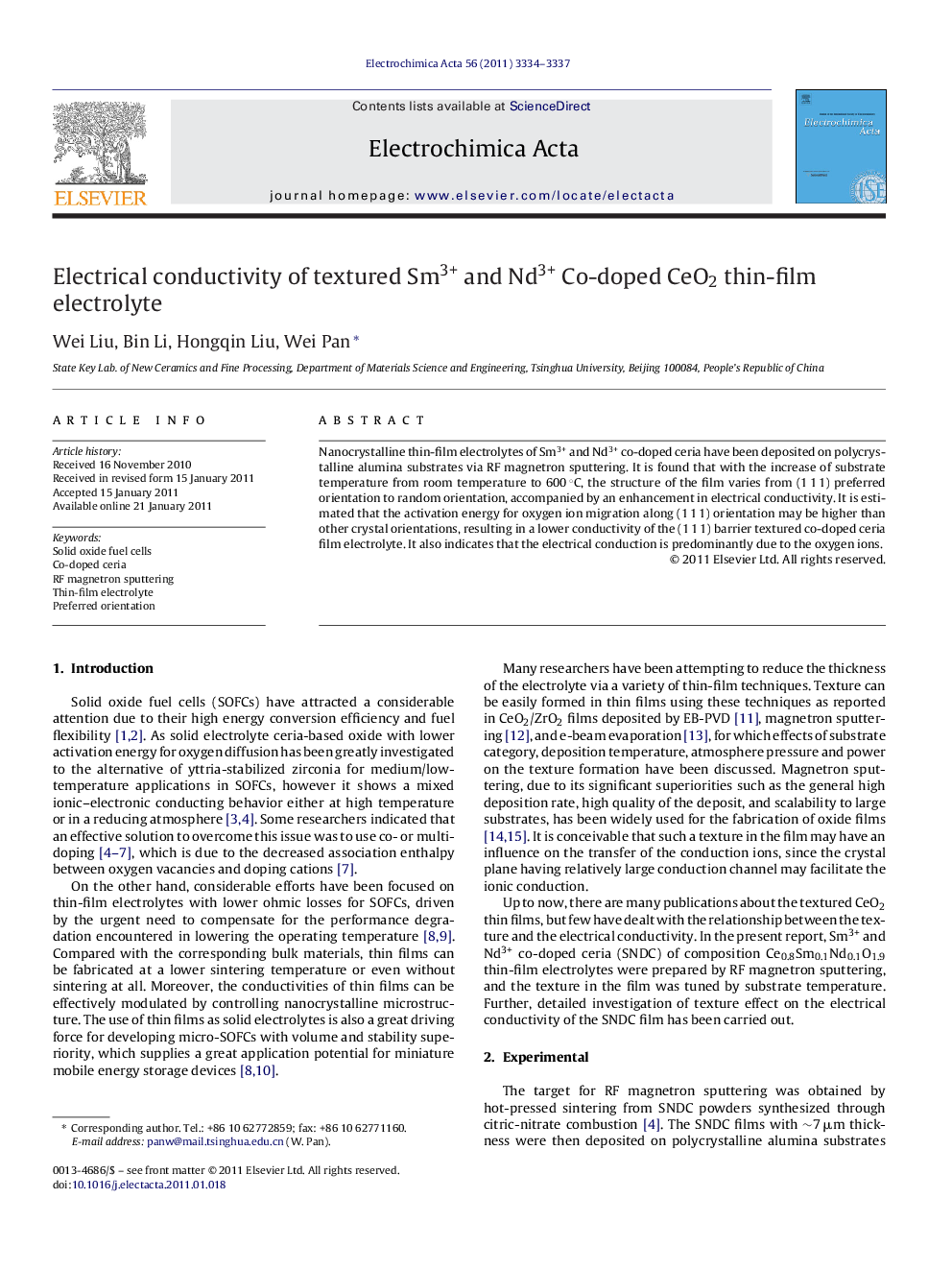| Article ID | Journal | Published Year | Pages | File Type |
|---|---|---|---|---|
| 189837 | Electrochimica Acta | 2011 | 4 Pages |
Nanocrystalline thin-film electrolytes of Sm3+ and Nd3+ co-doped ceria have been deposited on polycrystalline alumina substrates via RF magnetron sputtering. It is found that with the increase of substrate temperature from room temperature to 600 °C, the structure of the film varies from (1 1 1) preferred orientation to random orientation, accompanied by an enhancement in electrical conductivity. It is estimated that the activation energy for oxygen ion migration along (1 1 1) orientation may be higher than other crystal orientations, resulting in a lower conductivity of the (1 1 1) barrier textured co-doped ceria film electrolyte. It also indicates that the electrical conduction is predominantly due to the oxygen ions.
Research highlights► Sm3+ and Nd3+ co-doped ceria thin-film electrolytes are deposited by RF magnetron sputtering. ► With increase in the substrate temperature from room temperature to 600 °C, the structure of the film varies from (1 1 1) preferred orientation to random orientation. ► The (1 1 1) textured film has lower electric conductivity in comparison with the random oriented film. ► The SNDC film deposited at 600 °C shows the maximum conductivity of 0.006 S cm−1 at 500 °C.
